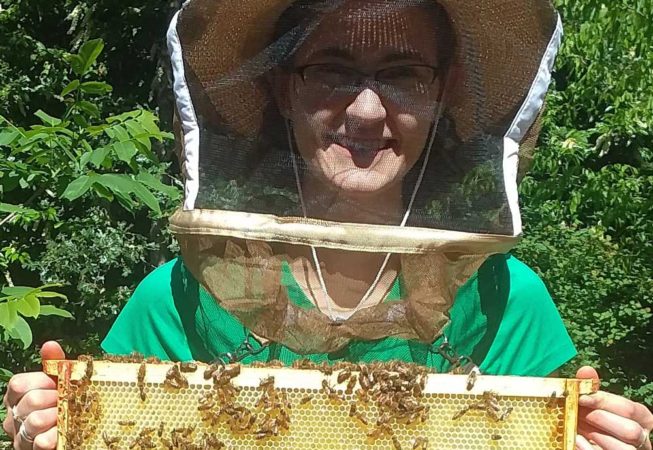Pesticide Exposure in Context
Estimations of pesticide exposure are critical for beekeepers and land managers working together to minimize the impact of plant-protecting products on bees. However, current ways of understanding pesticide risk often miss the field-relevant factors which can influence the outcome of exposure. To understand pesticide stress in a field context, we must also consider the interactions between foraging effort of bees, pollen nutrition, and pollen diversity.
This project examines how landscape-scale factors influence pesticide exposure in honey bees and compare this with native bee exposure in the same landscape. This summer, pesticide residues were monitored in cherry, meadowfoam, clover, and carrot pollination systems. These profiles are compared with bee foraging patterns and native bee activity. In future work, we will feed pollen to bees in the lab and assess how bee health changes under field-realistic pesticide profiles.
Emily A Carlson is a Graduate Research Assistant and PhD student at Oregon State University in the Honey Bee and Pollinator Health Labs. For her current work on the ecology of pesticide exposure in beneficial insects, she has been awarded the National Science Foundation fellowship for Graduate Research and the USDA Future Leaders Award. Emily holds a Bachelors of Science in Biology from Gonzaga University, and her previous experience includes riparian restoration, natural resource education with adult landowners, and grant writing. Emily has a passion for working with diverse stakeholders towards the common goal of pollinator conservation. Outside of the lab and the field, Emily enjoys outreach opportunities, sharing her love of all six-legged creatures.

